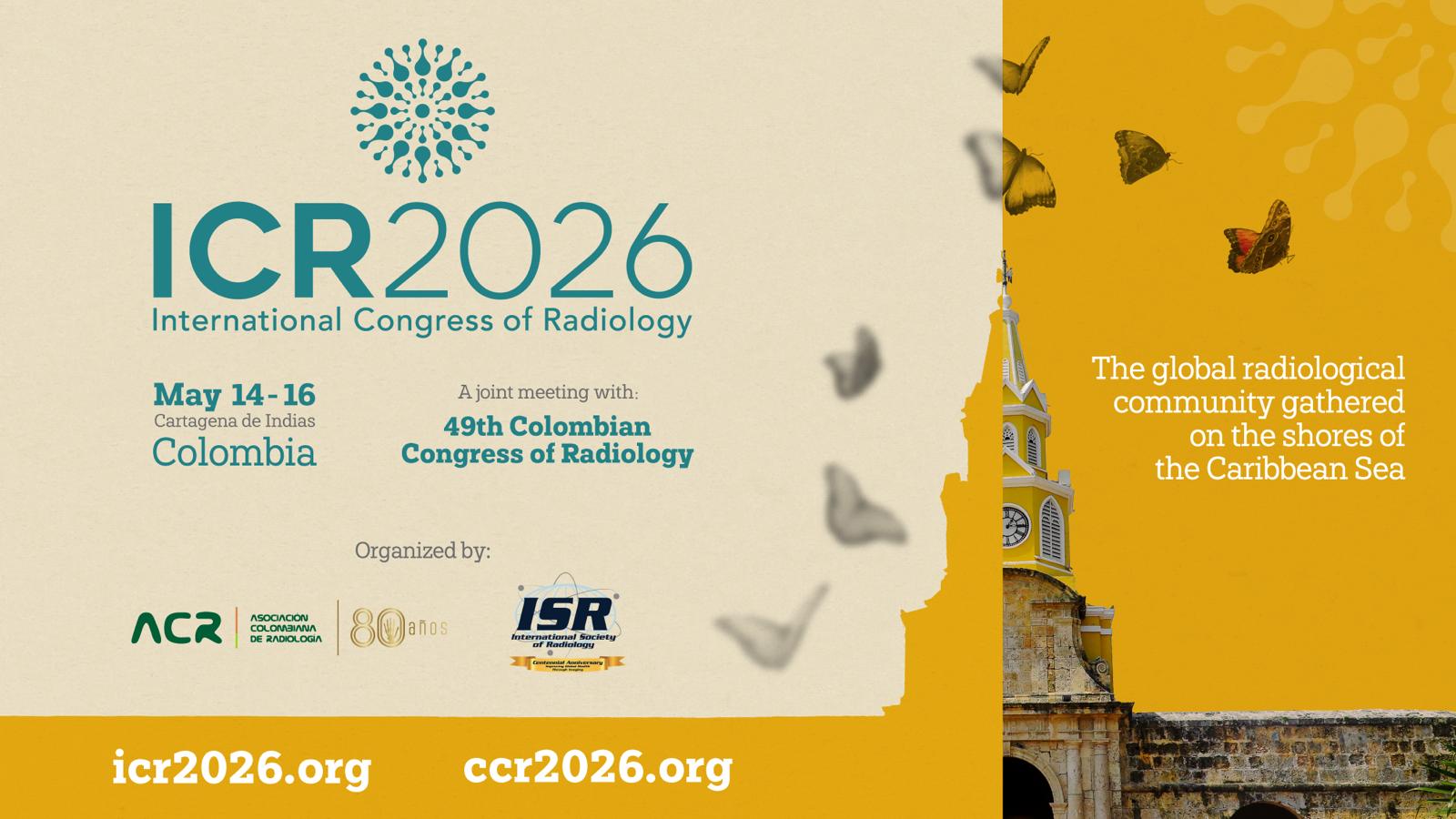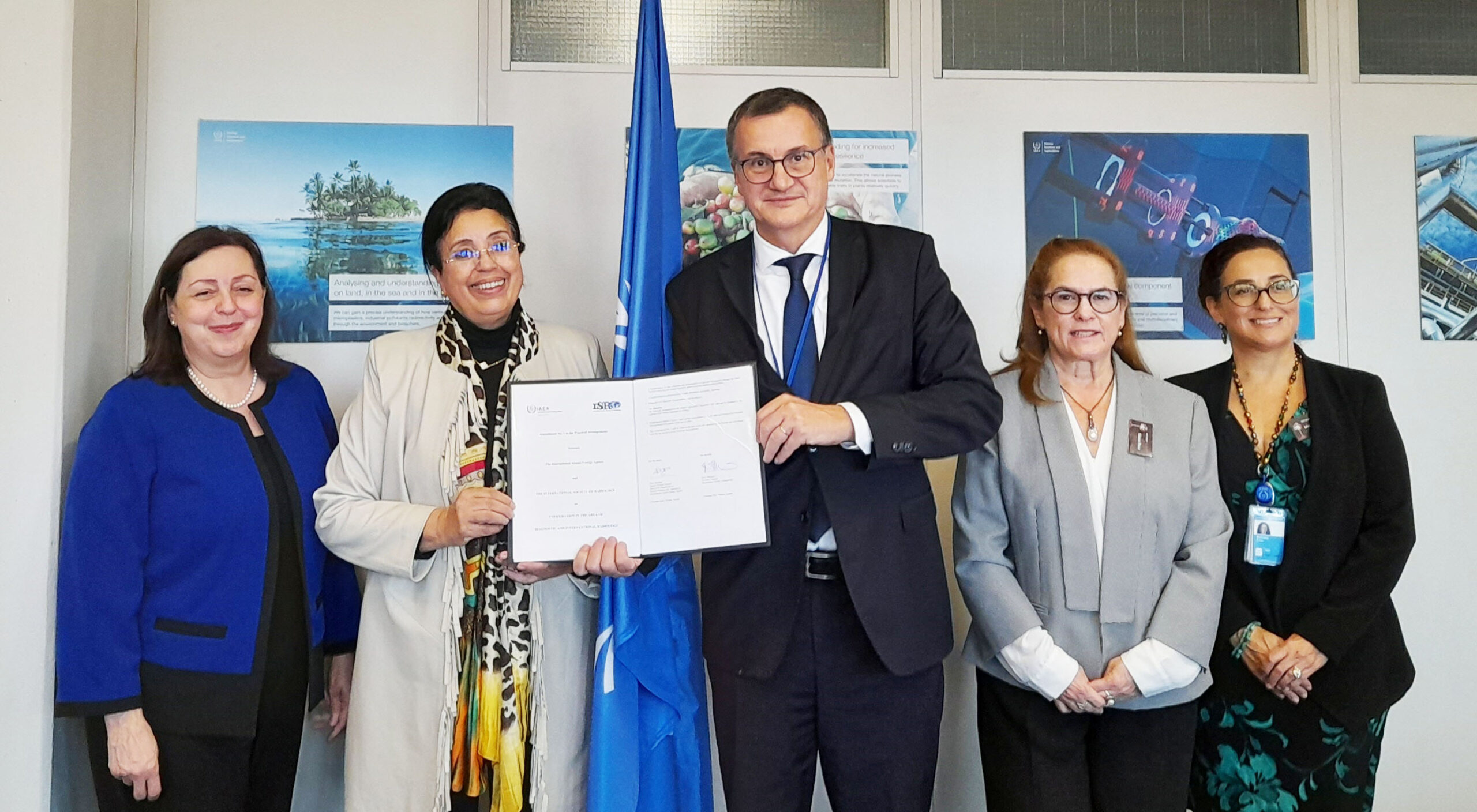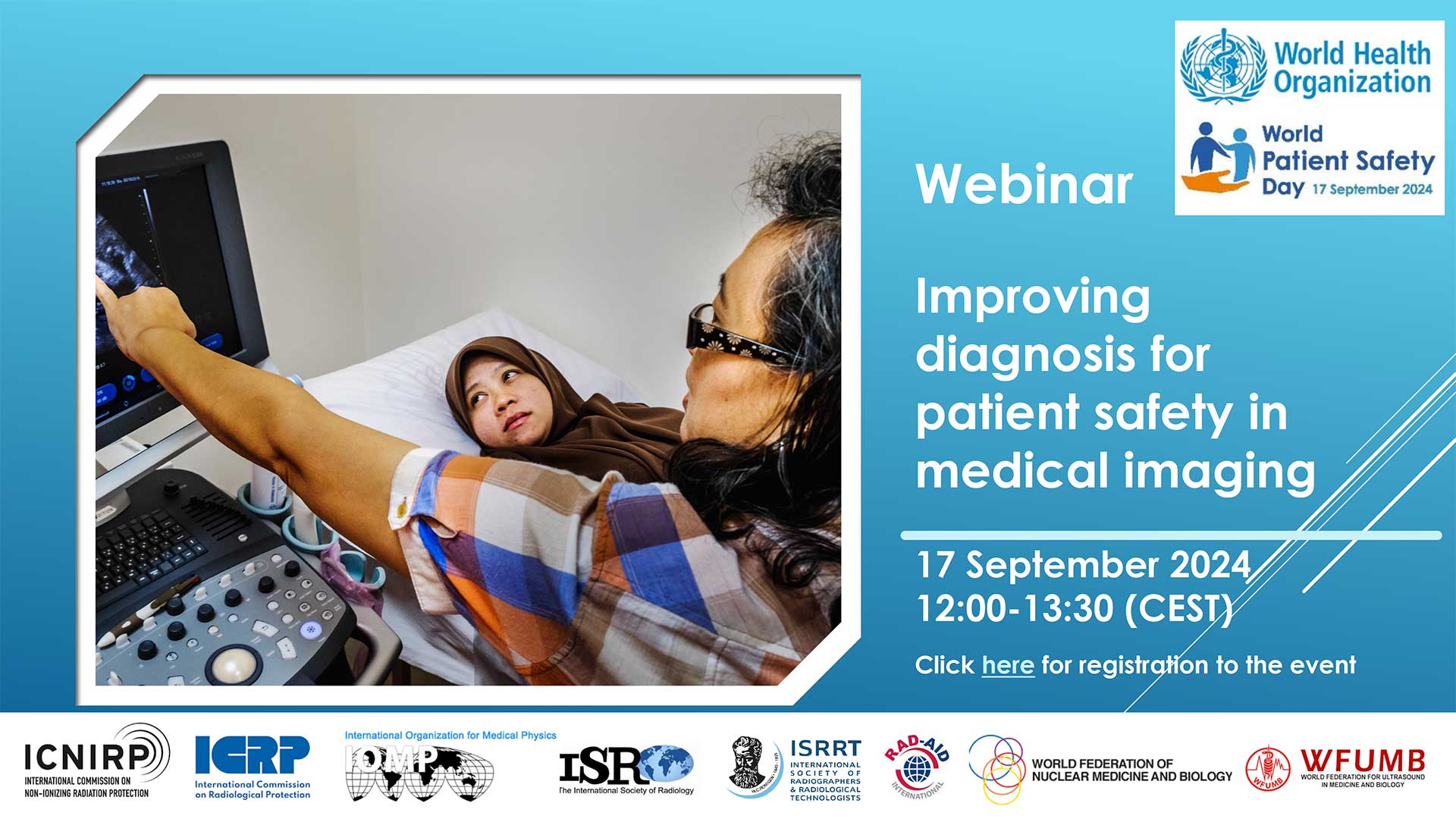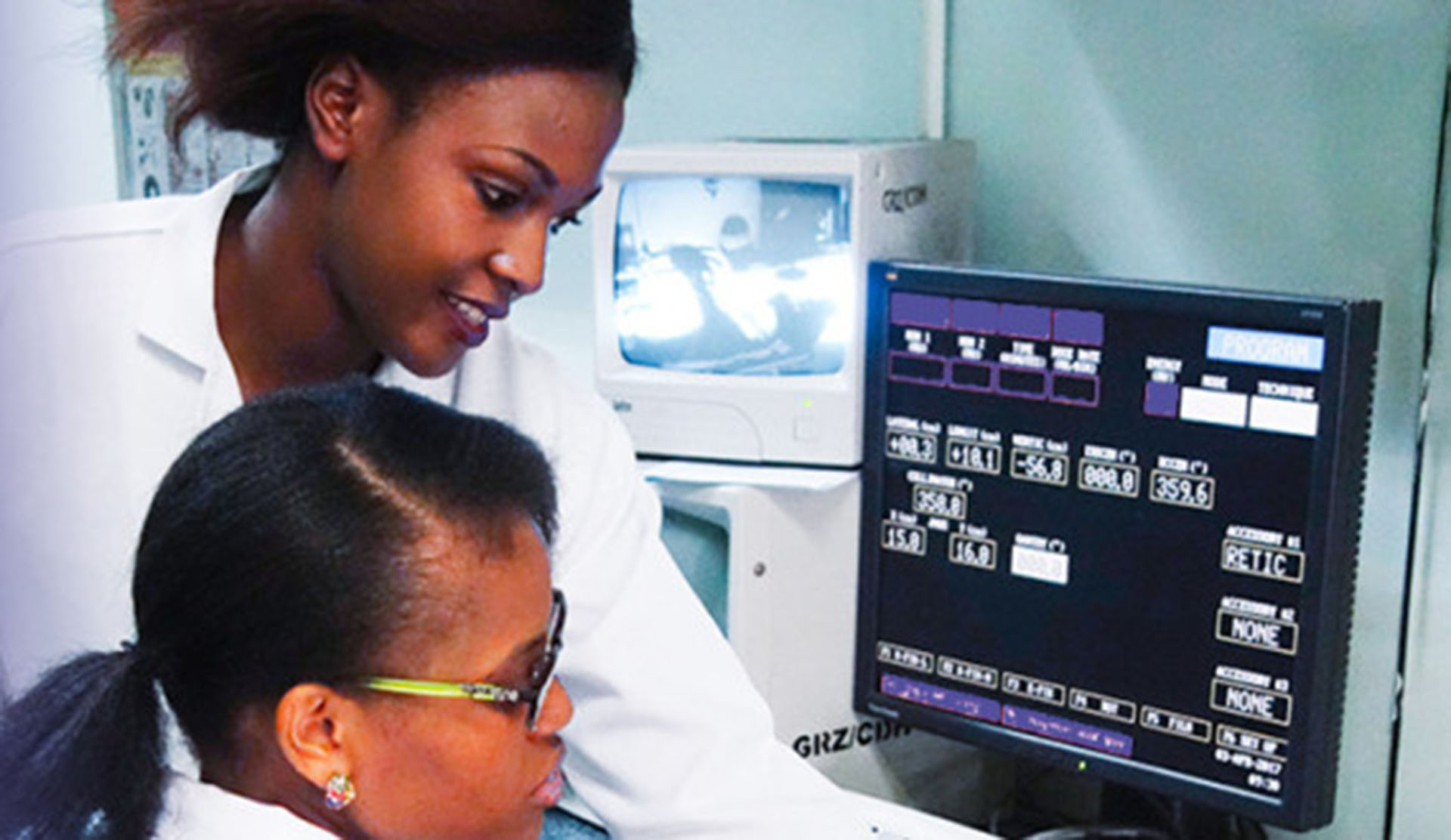A joint meeting with 49th Colombian Congress of Radiology | May 14 – 16 | Colombia, Cartagena de Indias
Continue reading
The International Society of Radiology
A joint meeting with 49th Colombian Congress of Radiology | May 14 – 16 | Colombia, Cartagena de Indias
Continue readingIt is with deep sadness we announce the passing of Dr. Sudhir Vinayak, President-Elect of the International Society of Radiology.
Continue readingThe ISR is delighted to announce the extension of its Practical Arrangements with the International Atomic Energy Agency (IAEA) until 2027.
Continue readingRegister now for the free webinar on “Improving diagnosis for patient safety in medical imaging”, organized by the WHO on the occasion of World Patient Safety Day (WPSD) on 17 September.
Continue readingThe ISR is pleased to announce that we have been invited by the International Atomic Energy Agency (IAEA) to collaborate on the Rays of Hope (RoH) initiative on advancing cancer management by providing experts for the RoH Anchor Centres.
Continue reading
In light of the recent events in Israel, the ISR extends its deepest sympathies to all of those affected by the ongoing violence and destruction.
As a nongovernmental organization with a mission to facilitate the improvement of patient care and population health through medical imaging, we express our sincere gratitude and appreciation to our radiology colleagues and other healthcare workers in the region for their selfless commitment to patient care and to saving lives under dire conditions. Our hearts are with all of those impacted by the violence.
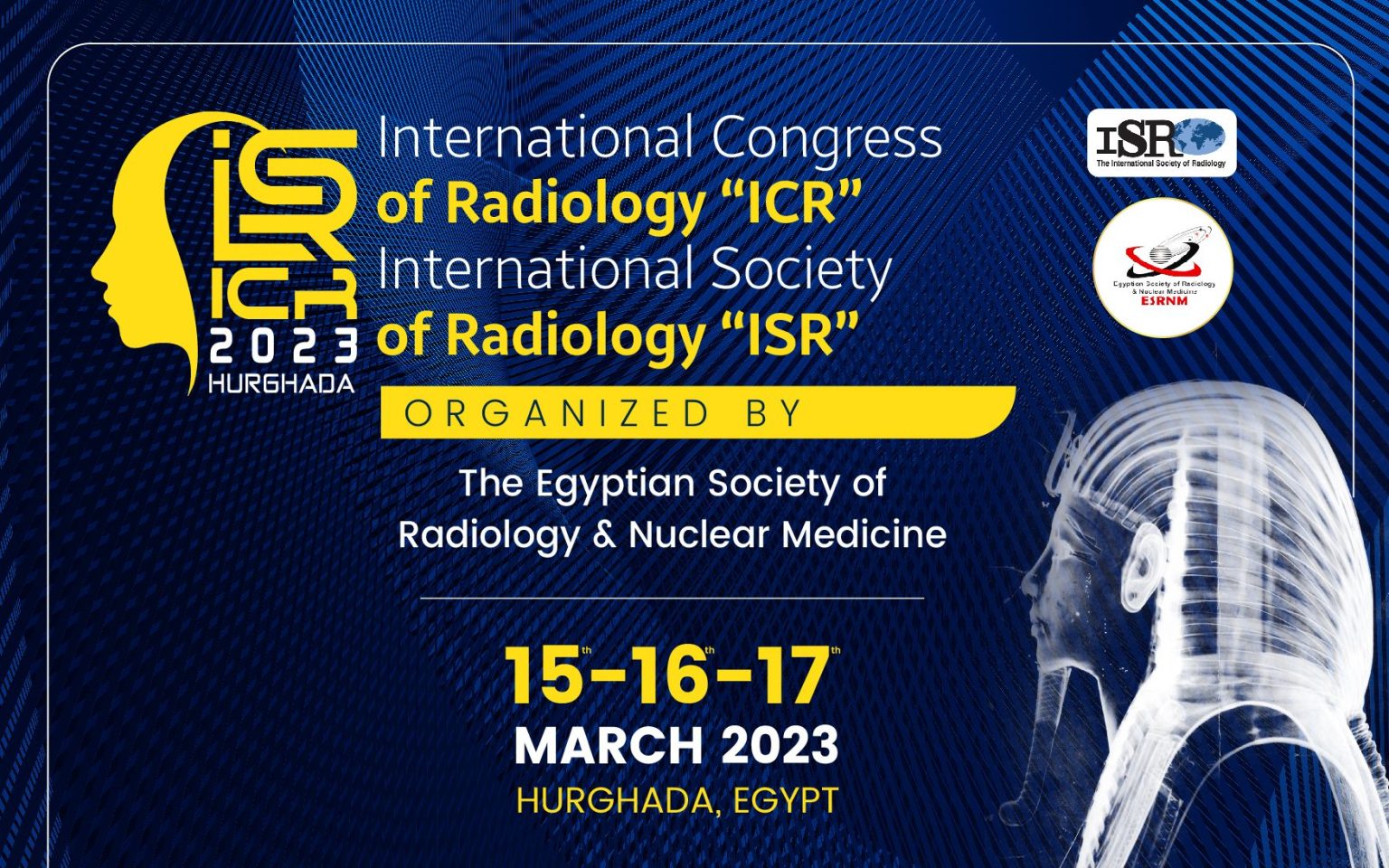
The International Congress of Radiology – ICR 2023, March 15-17, 2023, hosted by the Egyptian Society of Radiology & Nuclear Medicine (ESRNM) at Steigenberger ALDAU Hotel Hurghada, Egypt, was a great success. The ISR thanks all participants, speakers, moderators and the organizing team for having made this meeting a fruitful, inspiring experience thanks to their outstanding professionalism and enthusiasm.

The WHO-ISR-WFPI World TB Day 2022 Scientific Symposium: Updated WHO Guidelines on the Management of Tuberculosis in Children and Adolescents: The Role of Chest Radiography, organized by the World Health Organization (WHO) and the ISR along with the World Federation of Pediatric Imaging (WFPI) on 24 March, was a great success.
To make the webinar available also to those who could not join the event live, we are pleased to share the
RECORDING for free HERE.
To view the PROGRAM, please click HERE.
ABOUT THE EVENT
The World Health Organization (WHO) and the International Society of Radiology along with the World Federation of Pediatric Imaging (WFPI) co-hosted a webinar on World TB Day to mark the release of updated WHO guidance on the management of tuberculosis (TB) in children and adolescents. The new WHO guidelines include recommendations that span the TB cascade of care, from diagnostic approaches to treatment of both drug susceptible and drug resistant TB, to models of care to optimise TB prevention and case detection efforts. The new recommendations provide an opportunity to significantly improve the care provided to children, adolescents and families affected by TB.
TB remains one of the top infectious killers in the world, it can affect everyone, but children and young adolescents (aged 0-14 years included) are particularly vulnerable. They accounted for 11% of the 10 million people who fell ill with TB in 2020 and sadly over a quarter of a million children died. Detecting TB in children can be challenging due to symptoms that overlap with other childhood illnesses and difficulties in confirming a diagnosis due to the paucibacillary nature of TB disease, especially in young children.
This World TB Day brought together a panel of paediatricians, clinicians, radiologists, radiographers, TB affected communities, policy makers and programme implementers to raise awareness about TB in children and adolescents. The new WHO recommendations on the management of TB in children and adolescents, with a special focus on the role of radiology to diagnose and treat TB in children, were discussed. This webinar is special interest and relevance to an audience who are involved in the prevention, diagnosis and treatment of TB in children and who want to better understand the role of radiology in these efforts.
The ISR collaborates with the WHO as an NGO in official relations, to facilitate the global endeavors to improve patient care and population health through medical imaging. During the joint ISR-WHO World Tuberculosis Day 2021 symposium, the WHO presented its updated guidelines for TB screening, which now include recommendations on the use of chest radiography and computer-aided detection (CAD) systems.
The WFPI is another important cooperation partner of the ISR. To intensify cooperation in pediatric imaging, the two organizations have recently signed a collaboration agreement.

The Lancet Oncology Commission on Medical Imaging and Nuclear Medicine presents results from the first-ever comprehensive effort to quantify imaging and nuclear medicine resources worldwide. It highlights dramatic inequalities in access to these resources and calls for a global strategy to scale up access to imaging and nuclear medicine for cancer patients in low-income and middle-income countries (LMICs). The ISR is proud to be among the supporting organizations.
Read the Commission at www.thelancet.com/commissions/medical-imaging-nuclear-medicine
Read the full press release below:
Vienna, Austria – 4 March 2021: The Lancet Oncology Commission on Medical Imaging and Nuclear Medicine, launched today during the European Congress of Radiology 2021, presents results from the first-ever comprehensive effort to quantify imaging and nuclear medicine resources worldwide, highlighting dramatic inequalities in access to these resources. It also shows for the first time that scaling up access to imaging and nuclear medicine for cancer patients in low-income and middle-income countries (LMICs) would yield substantial health and economic benefits, and it calls for an overarching global strategy to address this need.
By 2030, worldwide, annual numbers of new cancer cases and cancer deaths are expected to reach roughly 22 million and 13 million, respectively. Even more concerning, approximately 80% of the disability-adjusted life years lost to cancer are in LMICs, where only about 5% of the global funding for cancer control and care is applied. Imaging is essential to provide timely diagnosis, appropriate treatment selection and planning, and optimal outcomes for patients with cancer.
“The aim of the Commission was to provide data and guidance to catalyze sustainable improvement of medical imaging and nuclear medicine services for cancer management, particularly in LMICs,” explains lead Commissioner Dr. Hedvig Hricak from Memorial Sloan Kettering Cancer Center, New York/USA.
Under the Commission, the International Atomic Energy Agency (IAEA) led a global effort to collect and collate data on equipment and workforce, with a focus on LMICs through the IAEA Medical Imaging and Nuclear Medicine Global Resources Database (IMAGINE). The effort revealed substantial differences in the numbers of imaging units per million population between high-income and low- and middle-income countries, as well as variations within income groups. It also revealed that availability of a well-trained workforce for imaging and nuclear medicine is a major issue affecting access to and quality of these services. “To date, comprehensive information on appropriate levels of imaging and nuclear medicine facilities and workforce required for cancer care have been limited. The data obtained allows estimates of projected equipment and workforce scale-up requirements for diagnostic imaging in cancer care,” says Dr. May Abdel-Wahab, co-first author of the Commission and Director of the IAEA Division of Human Health.
A microsimulation model developed by researchers at Harvard University estimated that the scale-up of imaging would avert 3.2% (2.47 million) of all 76 million deaths caused by cancer worldwide between 2020 and 2030, saving 54.92 million life-years. Model estimates indicate that a comprehensive scale-up of imaging, treatment, and care quality would avert 9.55 million (12.5%) of all cancer deaths worldwide, saving 232.30 million life-years. Combining the scale-up of imaging, treatment, and quality of care would provide a net benefit of $2.66 trillion and a net return of $12.43 per $1 invested.
“For the first time, we have evidence demonstrating the substantial health and economic benefits of scaling up imaging and nuclear medicine access for health outcomes of cancer patients globally and we have a compelling economic case for further investment in global scale-up of imaging and nuclear medicine,” says Dr. Rifat Atun, co-first author of the Commission and Professor of Global Health Systems at Harvard University. “Now we need to get governments and funding bodies on board to work together on scaling up imaging infrastructure in LMICs,” adds Dr. Hricak.
The Commission proposes an ambitious call to action to realize the health and economic benefits of scaling up imaging to reduce cancer burden globally. This goal is aligned with the aims of the 2017 WHO Cancer Resolution and with UN health targets in the 2030 agenda for sustainable development, particularly for reducing the burden of non-communicable diseases and implementing universal health coverage.
“The IAEA can support countries in upscaling their diagnostic imaging capabilities through fact-finding missions, technology transfer, capacity building, clinical research, education and training initiatives, quality management programs, and guidelines,” says Dr. May Abdel-Wahab.
“The Commission provides a clear path forward, and we look forward to collaborating with all stakeholders on implementing the call to action with the aim of improving cancer care for patients globally,” says senior author of the Commission Dr. Andrew Scott from Austin Health and the Olivia Newton-John Cancer Research Institute, Melbourne, Australia.
The Commission concludes that science and technology are not the barriers to a worldwide equitable scale-up of effective cancer imaging diagnostics; rather, achieving equitable scale-up is a matter of vision and political will. Successful scale-up will result from effective political leadership, active participation from all major stakeholders, and the alignment of country-level and global efforts to expand access to medical imaging and nuclear medicine for cancer care. Efforts must take into account local and regional conditions (e.g., the prevalence of particular cancers and the availability of specific kinds of treatments, among other factors), and must be coordinated with the scale-up of other cancer care resources and universal health coverage. Prof David Collingridge, Editor-in-Chief, The Lancet Oncology: “Cancer imaging is vital for accurate diagnosis and treatment, but huge global inequities exist and many of the world’s poorest countries suffer from a shortage or complete lack of the necessary technology and resources. We need to move the debate so that cancer imaging is placed alongside curative interventions as an essential component of comprehensive cancer care, and in turn, universal health coverage.”
Read the Commission at www.thelancet.com/commissions/medical-imaging-nuclear-medicine
The Lancet Oncology Commission on Medical Imaging and Nuclear Medicine was established in 2018, with the charge of examining global access to imaging and nuclear medicine for cancer care. The Commission brings together 17 leading global experts and the final report is peer reviewed and published in The Lancet Oncology. The report follows two previous Lancet Oncology Commissions in 2015 that assessed the gaps in access to cancer surgery and radiotherapy, and proposed actions to address the growing burden of cancer in LMICs. Find out more here: https://www.thelancet.com/lanonc/commissions
The Lancet Oncology Commission on Medical Imaging and Nuclear Medicine is supported by the following 27 organizations: the African Association of Nuclear Medicine, the American College of Radiology, the Association of Latin American Societies of Biology and Nuclear Medicine, the Australian and New Zealand Society of Nuclear Medicine, the Asia Oceania Federation of Nuclear Medicine and Biology, the African Organisation for Research & Training in Cancer, the American Society of Clinical Oncology, the Arab Society of Nuclear Medicine, the African Society of Radiology, the American Society for Radiation Oncology, the Breast Cancer Research Foundation, the European Association of Nuclear Medicine, the European Society for Medical Oncology, the European Society of Radiology, the European Society for Radiotherapy and Oncology, the Hong Kong College of Radiologists, the International Atomic Energy Agency, the International Society for Strategic Studies in Radiology, the International Society of Radiology, the National Cancer Institute, the Pan-Arab Association of Radiological Societies, the Radiological Society of North America, the South African Society of Nuclear Medicine, the Society of Nuclear Medicine & Molecular Imaging, the Union for International Cancer Control, the World Federation of Nuclear Medicine and Biology, and the World Molecular Imaging Society.
